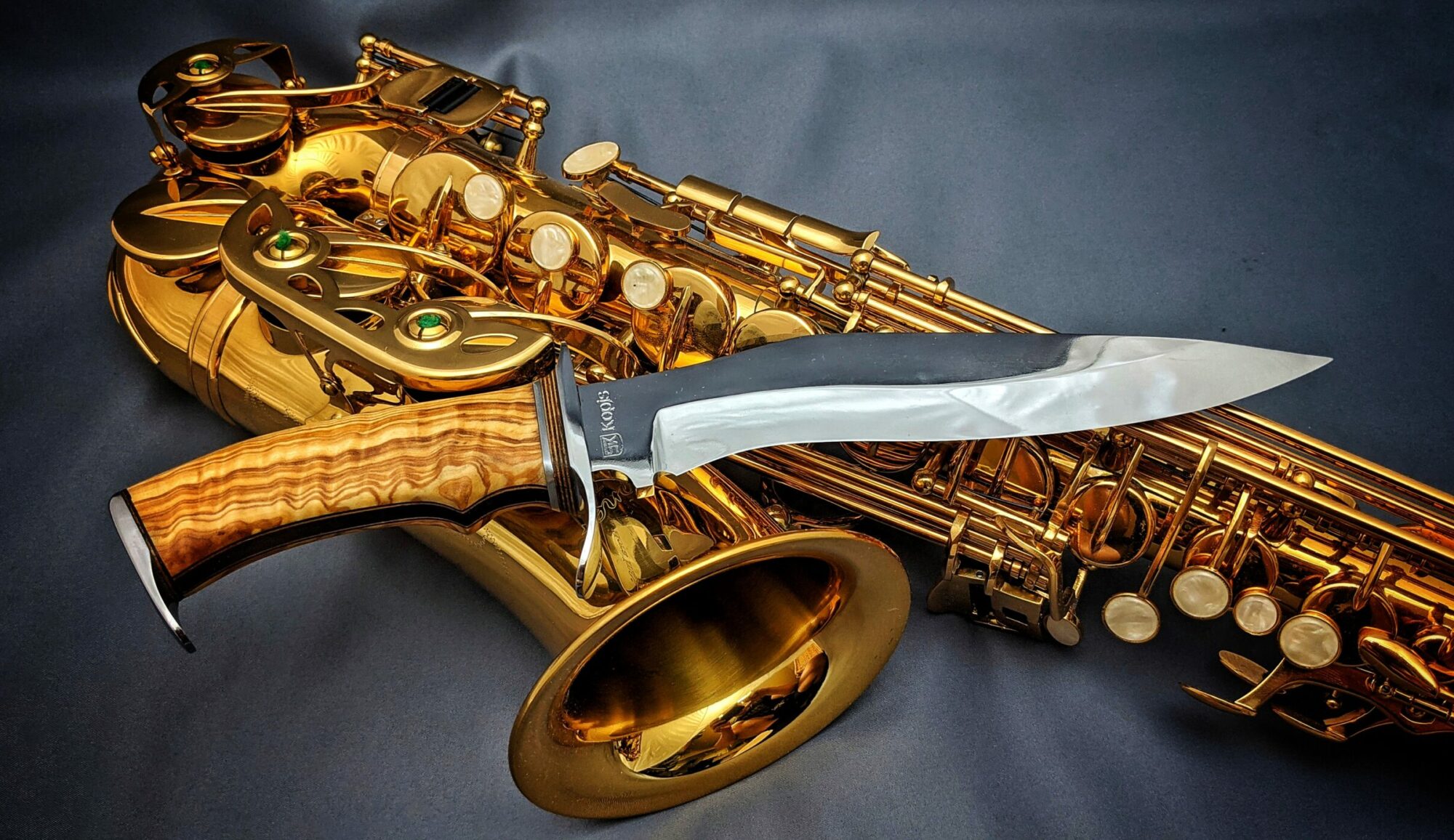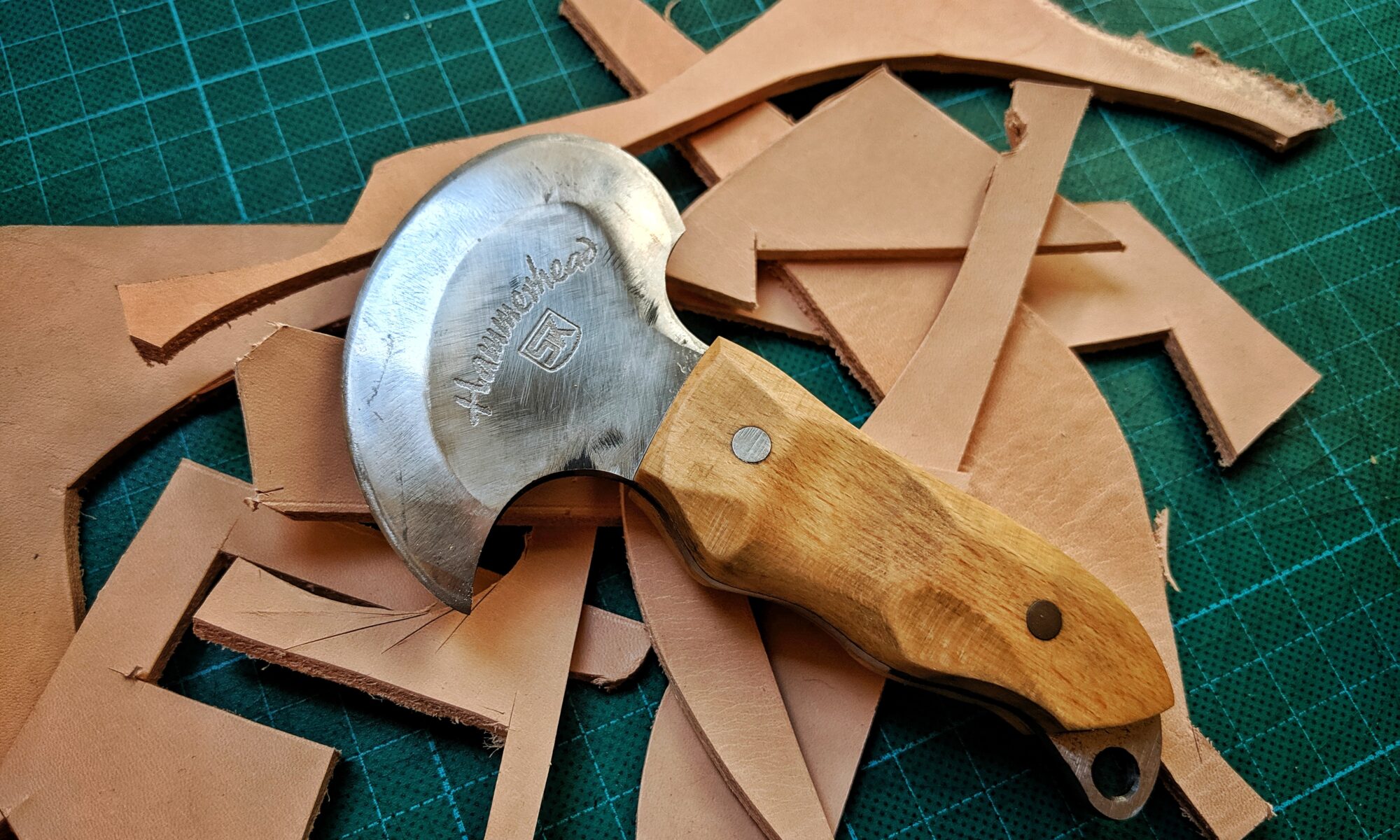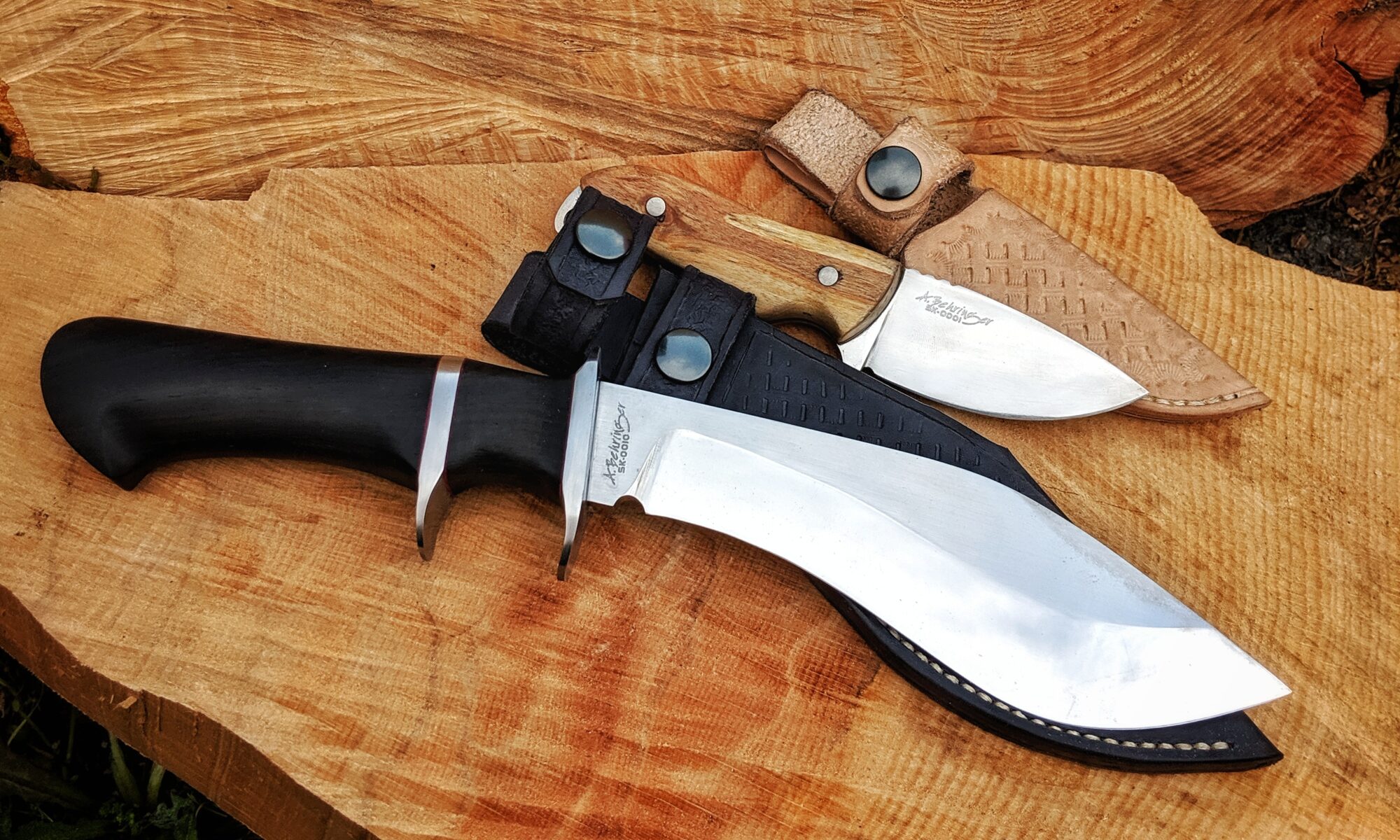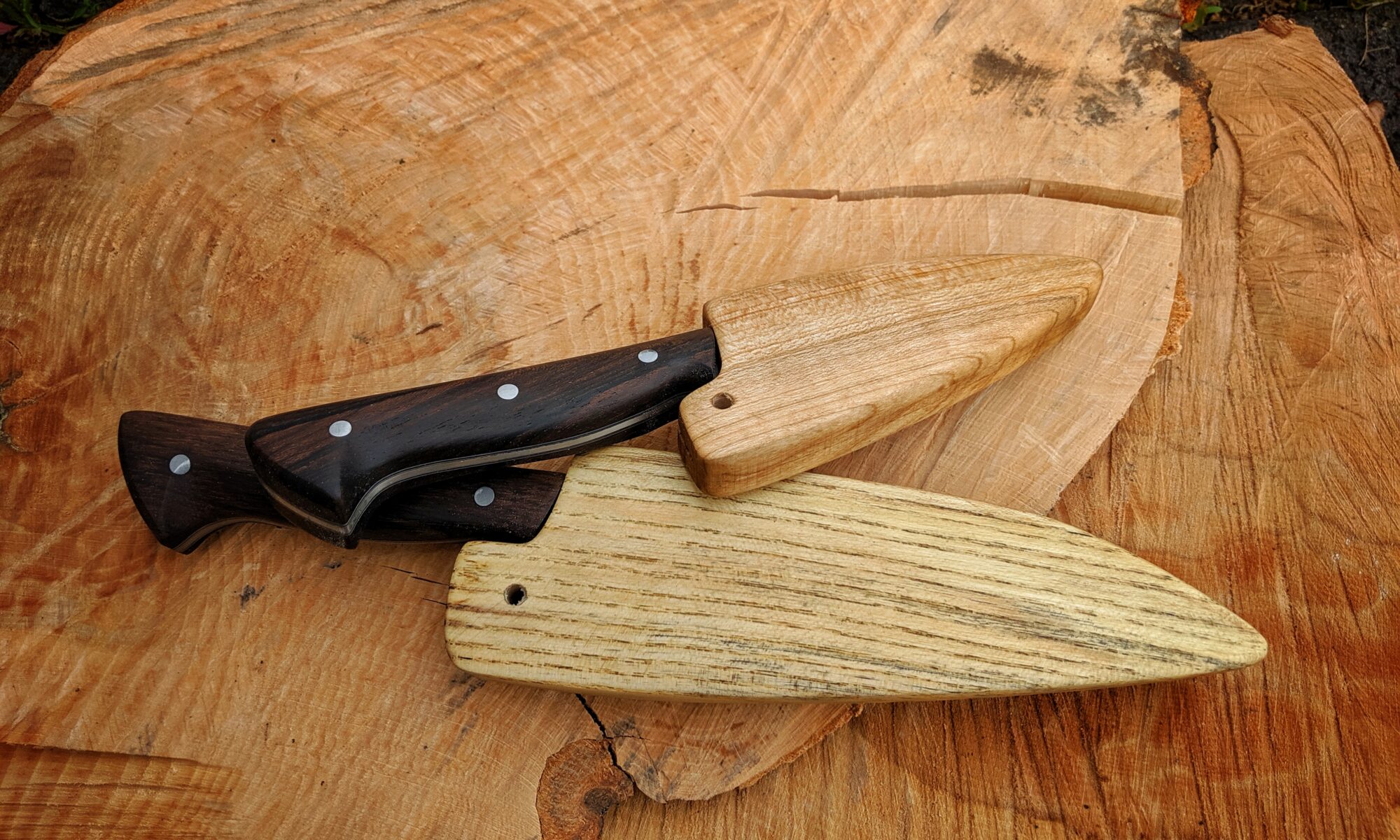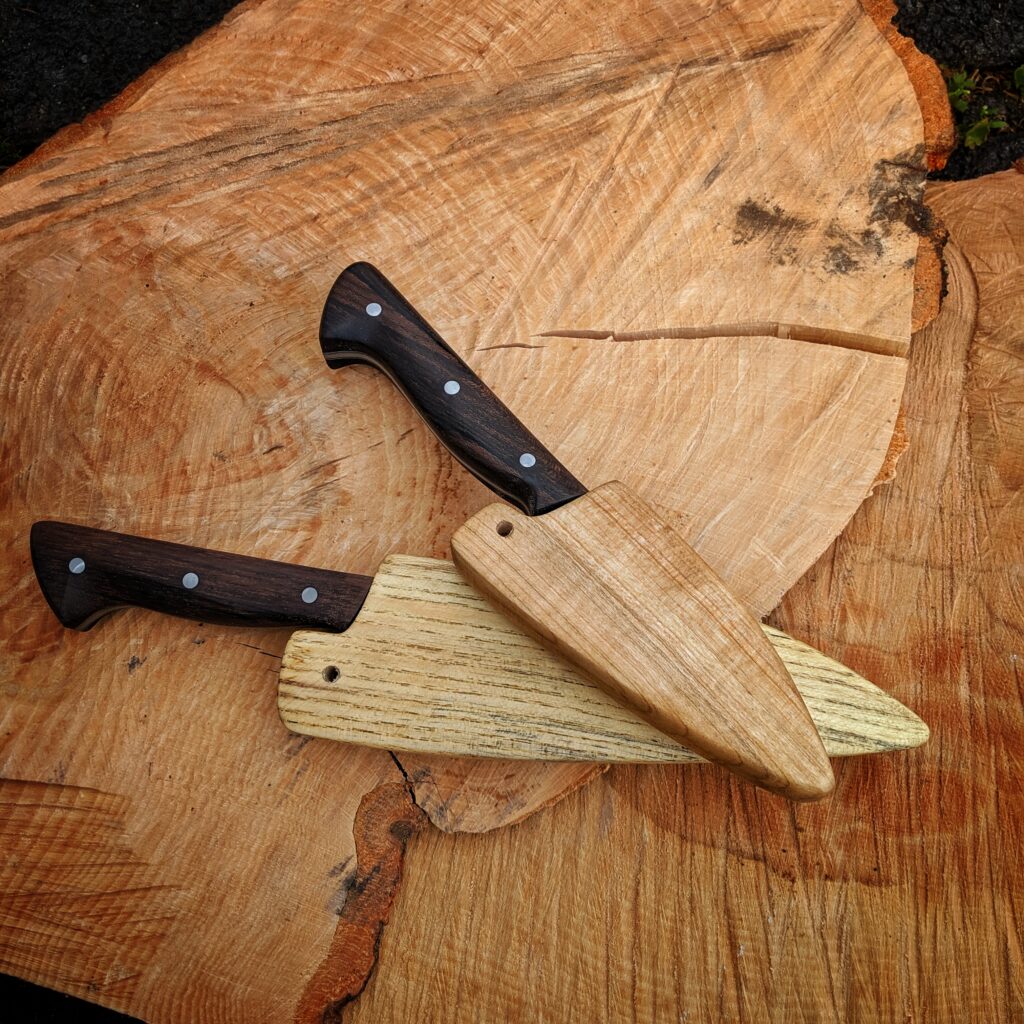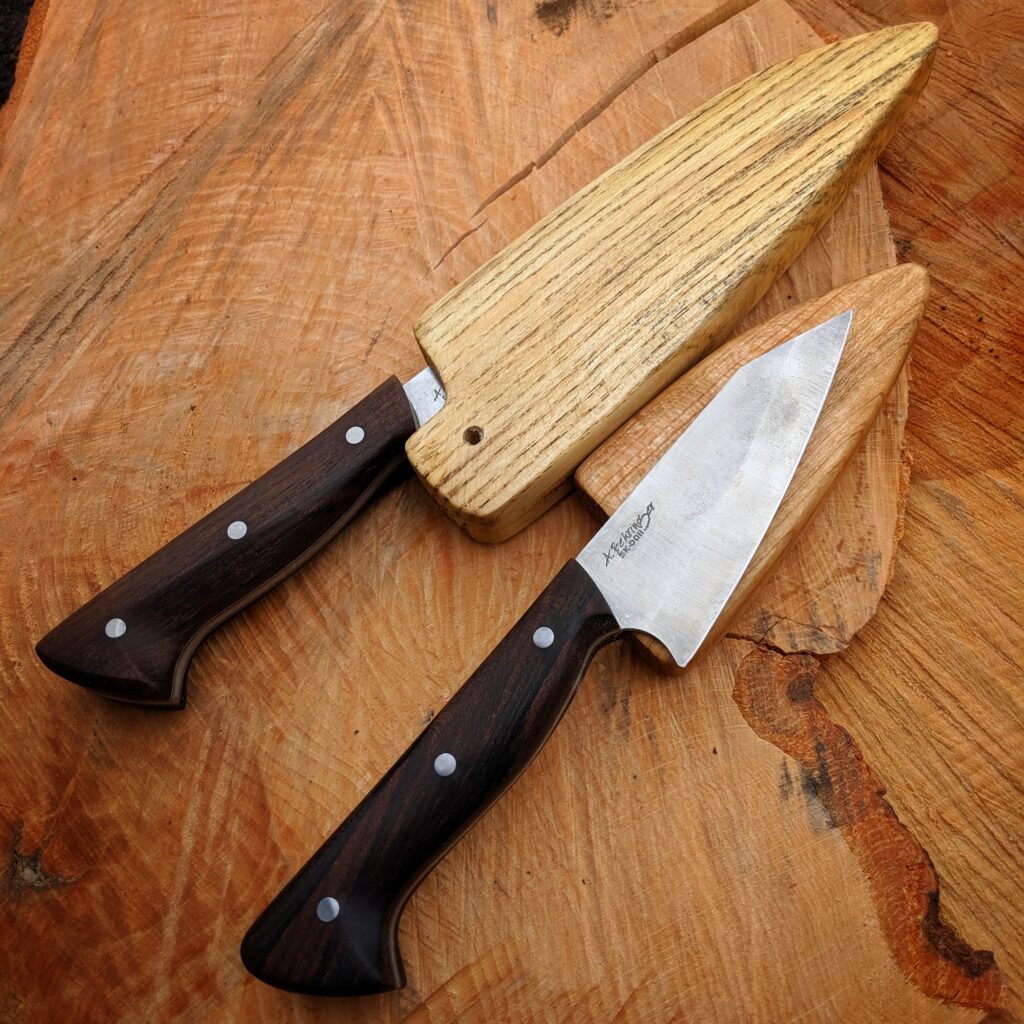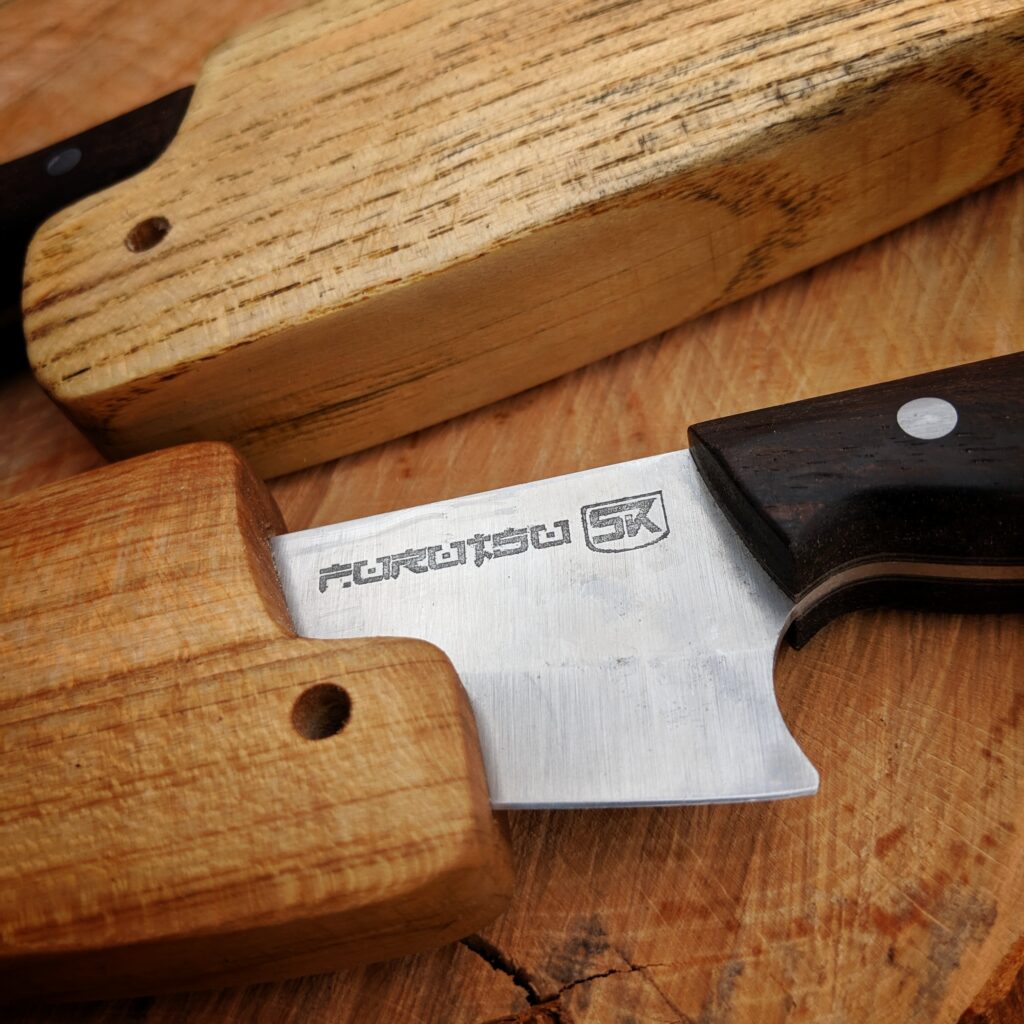Until now I used a sharp scalpel to cut the leather when making knife sheaths. The disadvantage is that the thin blade snaps pretty easily, especially when forcing the tip of the scalpel around sharp corners.
I thought about buying a half or quarter moon knife (leather round knife) for my work and searched how they are used and what the advantages are.
And then I recalled: hell, I am a knifemaker, why don’t I design and make myself a leather knife. So I put some design on paper. I wanted a sharp point on one end of the blade and a circular part of the blade to do rolling cuts and a part of the blade should be suitable for pulling cuts.
Most important would be that this knife is stupid sharp so it would be as good cutting leather as my scalpel does.
I had so much success with my knife projects so far and not so many failures, that I completely underestimated how hard it is to grind the bevels of such a complicated blade. I guess it is not impossible but this knife is no beauty after all. I ended up doing a convex grind for primary and secondary bevel as this helps even out the grinding mistakes. It is difficult to have a consistent angle all around the edge and even harder not to grind into other parts of the blade while concentrating on another. So I consider this grind as my first real failure in regards to beauty. Sharpening went just fine and I have a razor-sharp edge.
I chose some beech wood for the handle, which I had sawn and dried some time ago. The wood is sufficiently hard and cheap for a prototype tool. I glued the Wood directly to the steel without any micarta liners – something I did never do before, too. But in the end, it looks like a useable tool knife and the first cutting tests are very promising.
